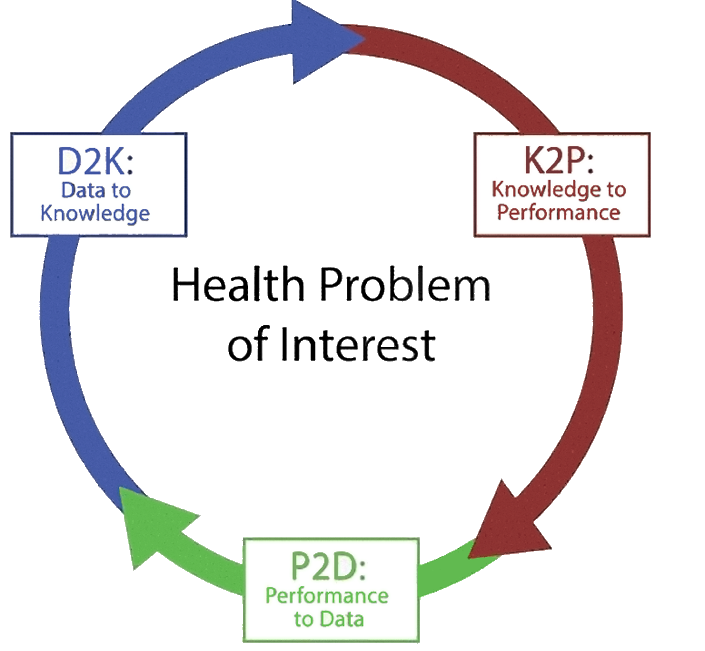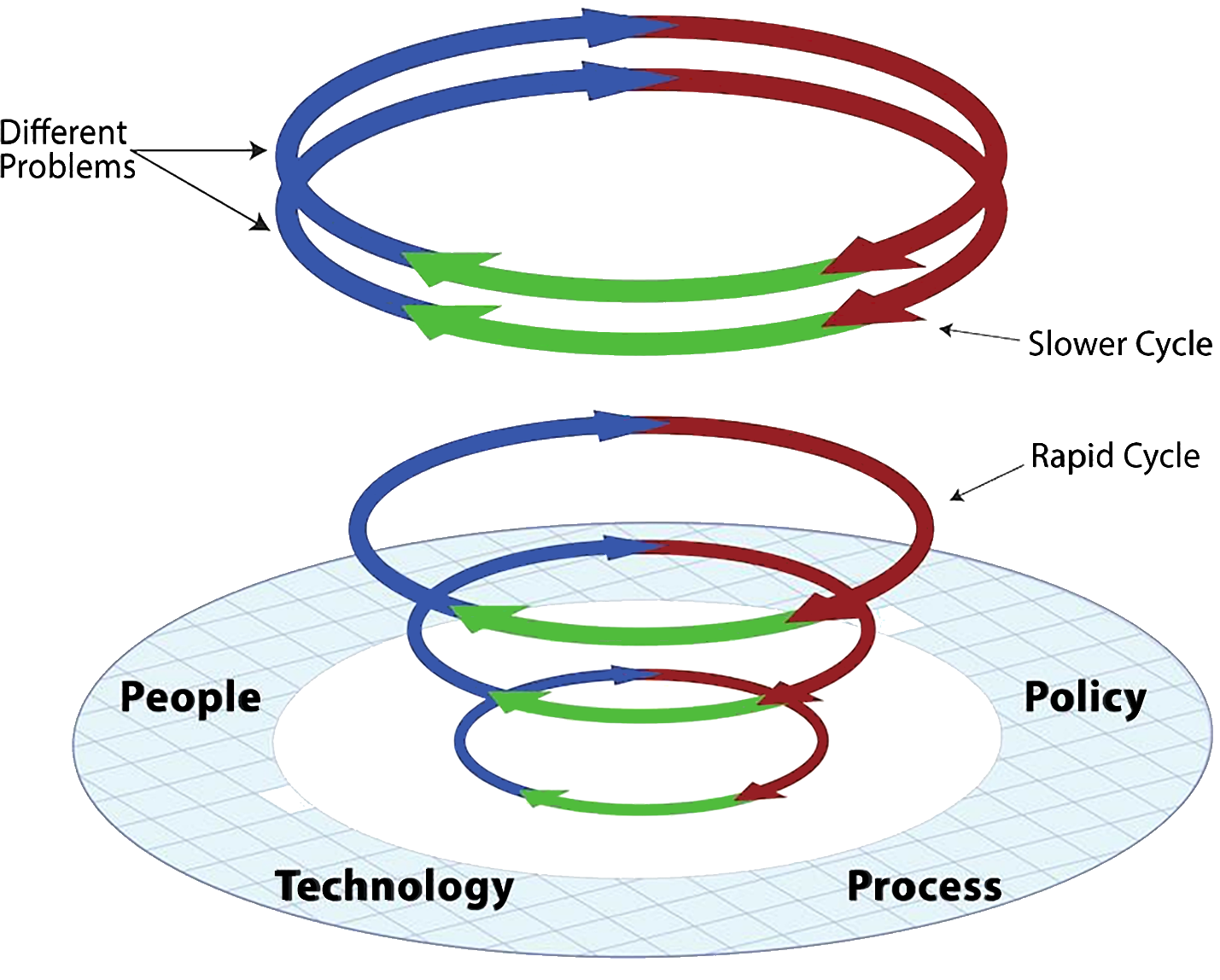Main Menu

In our last post on EvidenceConneKTion, we presented the value added to already high-quality implementation science (IS) projects when facilitated by an IS lab. Specifically, we talked about how an IS lab is both a process and a function that increases the efficiency and ability to learn lessons from university-health system collaborations, especially when in the context of a learning health system. In today’s post, we dive deeper in what exactly learning health systems are and how IS labs can fit into them.
The concept of learning health systems has gained tremendous interest due to such systems’ ability to improve healthcare practices in real-time. By using information from standardized electronic health data records, people have opportunities to learn from and respond to real-world health contexts, in turn improving patient outcomes and increasing efficiencies much more effectively than we have been able to do in the past.
Learning health systems are made up of two elements: learning cycles supported by a common infrastructure.

Learning Cycles
Learning cycles are processes, beginning with new evidence, that inform new interventions (like standard successful KT processes). Then, the people in the system capture data (outcome or process measurements) from the new practices and use that data to inform modifications, scale, spread, or abandonment of the new practices.
The cycle offers a process for people to collect data and learn from health care delivery methods as they function in real life, rather than needing entirely new studies every time someone wants to test a tweak to a practice or policy.
IS labs help design the implementation processes and associated evaluation measurements to test if/how the implementation approach works in a given setting. Once a method is piloted successfully in one site, it can be applied to a broader set of sites and evaluated to show if/how it works in different contexts. Thus, the embedded research projects facilitated by the lab are in themselves learning cycles focused on the topic of implementation.
Common Infrastructure
The common infrastructure that supports learning cycles has people, policies, processes and technology that researchers and practitioners can access to maximize the efficiency of knowledge creation and sharing.

Similar to the limitations described above about regular research collaborations, without a common infrastructural platform, each learning cycle would have to develop its own research agreements, data collection methods, resources for staffing, and ways to disseminate findings. Therefore, each cycle would bear the burden of 100% of the associated costs.
The infrastructure provides ongoing collaboration, expertise, technology, and knowledge capture and dissemination supports. These supports reduce the costs and time required to launch and support each learning cycle.
IS labs can act as the common infrastructure for implementation-specific learning cycles by:
assisting with recruitment of interdisciplinary team members,
developing design and measurement processes,
working with the healthcare system to ensure research and systems priorities are aligned,
acting as a lesson repository and sharing mechanism so that members of both the healthcare system and implementation science communities can learn from real-world implementation of new evidence.
In turn, this infrastructure reduces research duplication, eases the problems associated with one-off implementation research projects, and builds learning communities.
If you’re thinking, “this seems like a lot of work to set up an IS lab”, you are correct. Especially if there is no existing learning health system on which you can simply add an implementation-specific arm. It requires building a multi-stakeholder collaboration dedicated to improving patient health outcomes and maximizing health system efficiencies. The effort takes a lot at the front end but as descriptions of learning health systems suggest, the savings are well worthwhile in the end.
Curious about this front end and who all needs to be involved? Keep your eye out for the next installment of our IS lab blog series, where we will be talking about multi-stakeholder engagement and collaboration to establish an IS lab.
Let us know how you want to stay connected


 News + Events
News + Events

 Patient Partner Research Opportunities
Patient Partner Research Opportunities

 I agree to receive occasional emails from AbSPORU.
I agree to receive occasional emails from AbSPORU.University of Calgary Foothills Campus
3330 Hospital Dr NW
Calgary, AB T2N 4N1
University of Alberta North Campus
Edmonton Clinic Health Academy (ECHA)
11405 87 Ave NW
Edmonton, AB T6G 1C9
The Alberta SPOR SUPPORT Unit operates on and acknowledges the lands that are the traditional and ancestral territory of many peoples, presently subject to Treaties 6, 7, and 8. Namely: the Blackfoot Confederacy – Kainai, Piikani, and Siksika – the Cree, Dene, Saulteaux, Nakota Sioux, Stoney Nakoda, and the Tsuu T’ina Nation and the Métis People of Alberta. This includes the Métis Settlements and the Métis Nation of Alberta. We acknowledge the many First Nations, Métis and Inuit who have lived in and cared for these lands for generations. We make this acknowledgment as a reaffirmation of our shared commitment towards reconciliation, and as part of AbSPORU’s mandate towards fostering health system transformation.
© 2025 AbSPORU